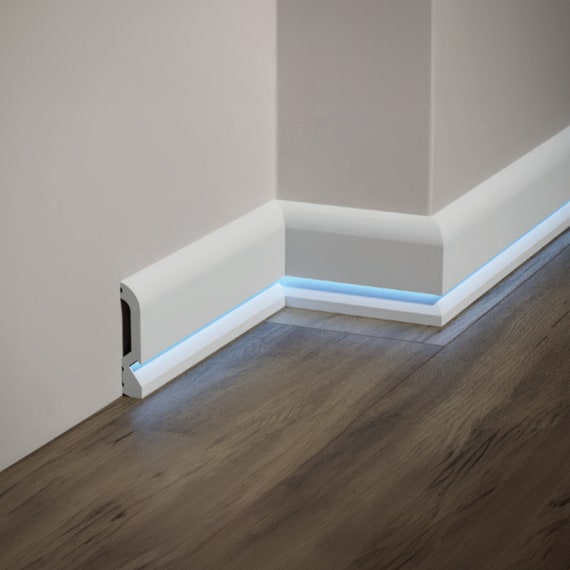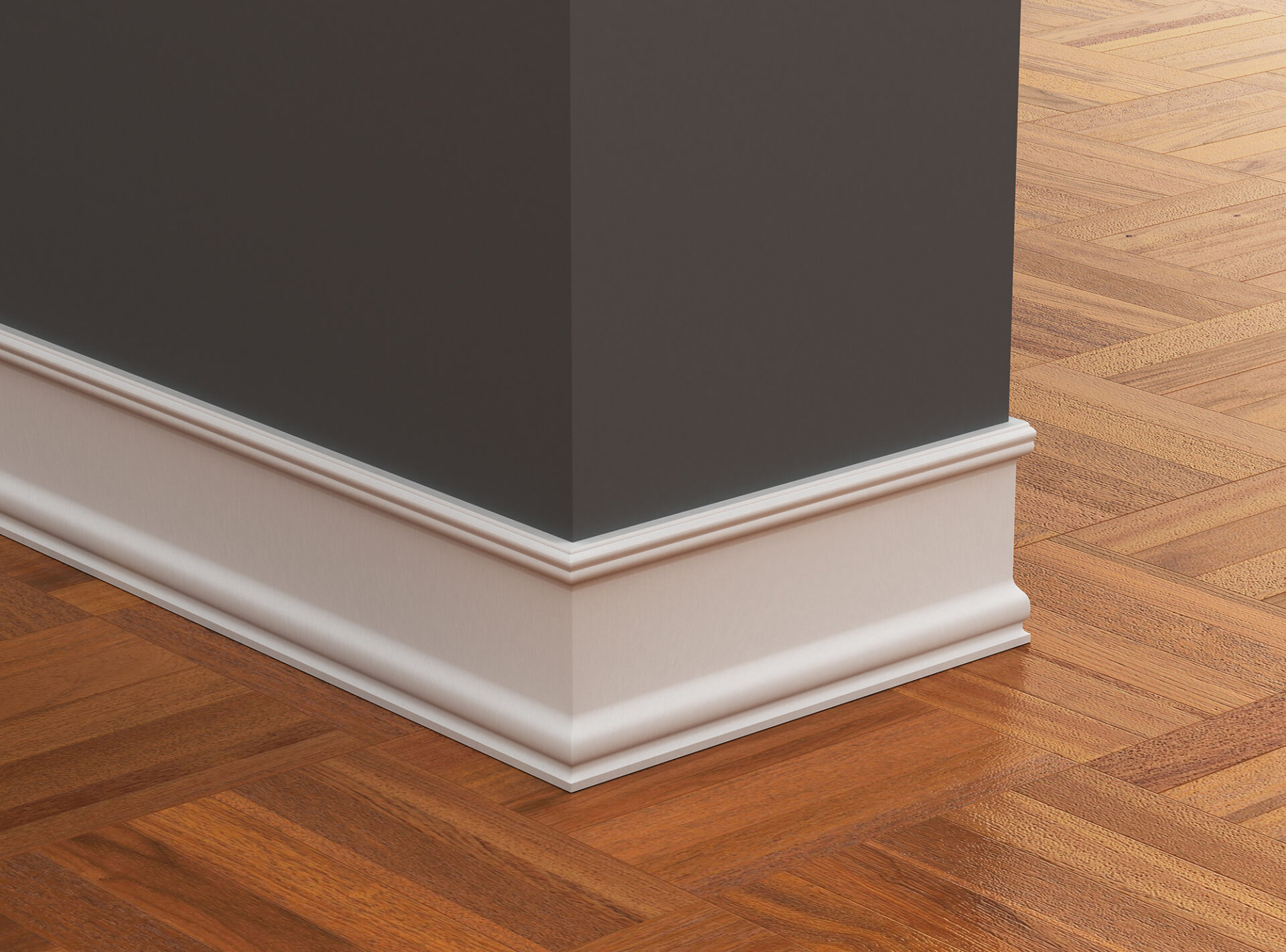Have you ever walked into a room and immediately noticed how the details make all the difference? One of those often-overlooked details is decorative floor molding. This often-underappreciated element can dramatically enhance the appearance of any space. With my personal experience and insights, I aim to guide you through the captivating world of floor molding—its types, benefits, installation tips, and much more. Let’s dive in!
What is Decorative Floor Molding?
Decorative floor molding, also known as baseboards or skirting boards, is a trim that runs along the bottom of walls, serving both functional and aesthetic purposes. It helps hide the joint between the wall and the floor, protects walls from damage, and adds a visual element that can complement any interior design style.
Types of Decorative Floor Molding
Choosing the right decorative floor molding can seem daunting due to the various styles, materials, and designs available. Below, I’ve categorized some of the most popular types:
1. Wood Molding
Wood molding adds a classic touch to any room. It can be painted or stained to match your décor. Here are some common wood molding types:
- Solid Wood: Durable and can be easily shaped.
- Plywood: A more economical option without sacrificing quality.
- MDF (Medium Density Fiberboard): Less prone to warping, often used for painted applications.
2. Vinyl Molding
Vinyl is a versatile and cost-effective option. It’s resistant to moisture, making it ideal for areas like bathrooms and kitchens.
3. Composite Molding
Composite materials are made from a mix of wood and synthetic fibers, offering durability and a range of designs.

4. Polystyrene Molding
This lightweight, easy-to-install option is often used for decorative purposes, adding elegance without significant weight.
5. Metal Molding
For a modern touch, metal moldings (like aluminum or stainless steel) are becoming popular in contemporary homes.

Benefits of Using Decorative Floor Molding
Investing in decorative floor molding yields numerous advantages, which I’ve highlighted below:
1. Aesthetic Appeal
Floor molding adds visual interest, contributing to a polished and finished look in any room. Different styles can transform the vibe—ranging from traditional to contemporary.
2. Hides Imperfections
Molding can effectively conceal gaps between the floor and wall, as well as any imperfections in the wall finish.

3. Protects Walls
It serves as a buffer against furniture, vacuum cleaners, and foot traffic, minimizing wear and tear on your walls.
4. Increases Home Value
A well-done molding installation can enhance your home’s overall value and appeal to prospective buyers.

Choosing the Right Decorative Floor Molding
Selecting the perfect molding for your space involves considering several factors:
1. Room Style
Consider the architectural style of your home. Modern spaces may benefit from sleek, simple shapes, while traditional homes often look better with ornate designs.

2. Height and Size
The height of the molding should be proportional to the room’s ceiling height. Taller ceilings call for taller baseboards, while shorter ceilings may benefit from more modest heights.
3. Color and Finish
Choose a color that complements your wall color and flooring. White or off-white is a classic choice that works well in many situations, but bold colors can make a statement.

4. Material
Each material has unique properties. Consider your budget, the area of installation, and the level of maintenance you’re willing to commit to.
Installation Process of Decorative Floor Molding
Installing decorative floor molding can be a DIY project or done by professionals. If you’re feeling adventurous, here’s a step-by-step guide based on my personal experience:

Required Tools and Materials
- Measuring tape
- Miter saw or hand saw
- Nail gun or hammer
- Wood glue
- Wood filler
- Sandpaper
- Paint or stain (if required)
- Caulk
Step-by-Step Installation Guide
- Measure the Walls: Measure the lengths of the walls to determine how much molding you’ll need.
- Cut the Molding: Use a miter saw to cut the moldings at a 45-degree angle for corners.
- Position the Molding: Hold the molding against the wall to ensure it fits properly.
- Nail the Molding: Use a nail gun or hammer to secure the molding in place. Space the nails about 16 inches apart.
- Fill Gaps and Holes: Use wood filler or caulk to fill any gaps or nail holes.
- Finish Off: Sand, paint, or stain the molding as desired.
Cost Considerations for Decorative Floor Molding
The cost of decorative floor molding can vary widely depending on materials and labor. Here’s a breakdown:
Table: Cost Comparison of Common Molding Materials
| Material | Average Cost per Linear Foot | Durability | Maintenance Level |
|---|---|---|---|
| Wood | $2 – $8 | High | Moderate |
| Vinyl | $1 – $4 | Medium | Low |
| Composite | $2 – $5 | Medium to High | Low |
| Metal | $3 – $10 | High | Moderate |
Pros and Cons of Decorative Floor Molding
Like any home improvement project, decorative floor molding comes with its own set of advantages and disadvantages. Here’s a closer look:
Pros
- Enhances aesthetic appeal
- Conceals gaps and imperfections
- Protects walls from damage
- Variety of styles and materials
- Can increase home value
Cons
- Can be costly depending on materials
- Requires maintenance (painting/staining)
- Installation can be time-consuming
- Risk of damage during installation
Trends in Decorative Floor Molding
As with many trends in home design, decorative floor molding is witnessing its own evolution. Here are some of the current trends I’ve noticed:
1. Minimalist Designs
Sleek, simple designs are becoming popular as modern homes lean towards minimalism.
2. Bold Colors
Gone are the days of just white molding. Homeowners are now opting for bold colors that stand out against walls.
3. Eco-Friendly Materials
With sustainable living in mind, many are looking for moldings made from reclaimed or recycled materials.
Frequently Asked Questions
1. What’s the difference between baseboards and moldings?
Baseboards are a type of decorative floor molding specifically designed for the bottom of walls, while moldings can refer to a broader range of trim used throughout the home.
2. Can I install decorative floor molding myself?
Yes! Installing decorative floor molding is a feasible DIY project for many homeowners, provided you have the right tools and a bit of patience.
3. How do I choose the right size molding?
The height of your molding should be in proportion to the height of the ceiling. Generally, taller ceilings can accommodate taller baseboards.
4. Is wood molding better than vinyl?
It depends on your needs. Wood offers a classic look but requires more maintenance. Vinyl is more affordable and moisture-resistant, making it perfect for high-humidity areas.
5. How do I maintain decorative floor molding?
Regular dusting and occasional cleaning with a damp cloth is usually sufficient. For painted moldings, keep an eye on chipping and repaint as needed.
Conclusion
Decorative floor molding is more than just a functional element—it’s a finishing touch that can redefine your space. Whether you’re refreshing a room with new moldings or are undertaking a full renovation, understanding the types, benefits, and installation processes will help you make an informed decision. From my personal journey with home decoration, I can attest that the right moldings can truly elevate the ambiance and style of your home. So, get inspired, choose your style, and enjoy the transformation!